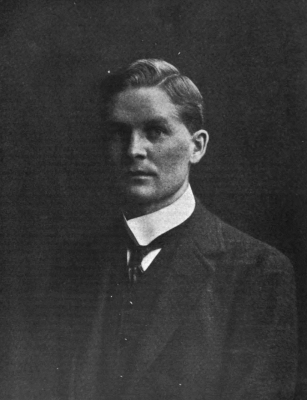
Isotopes are an indispensable part of science today. For even though the periodic table is only made up of more than 100 elements, they constitute over 3,000 nuclides – when we include the isotopes and their different nuclear energy states. This wide playing field amounts to plenty of scientific activity, resulting in a whole lot of benefits, and drawbacks, that have stemmed out of it.
Works with Rutherford, Ramsay
The person who gave us the term “isotope” is Frederick Soddy. Born in Eastbourne, England in 1877, Soddy was the youngest son of Benjamin and Hannah Soddy. Educated at private schools, Soddy went on to attend Eastbourne College, University College of Wales, Aberystwyth and the University of Oxford, graduating with first class honours. Working as a research assistant at Oxford till 1900, Soddy then spent a couple of years at the McGill University in Canada. It was here that he got to work on radioactivity and the disintegration of radioactive elements along with physicist Sir Ernest Rutherford, apart from serving as a lecturer in Chemistry. He followed it up with two years at the University College, London, where he had the opportunity to work with chemist Sir William Ramsay.
He spent ten years at the University of Glasgow from 1904, during which time he served as a lecturer in physical chemistry and radioactivity, apart from completing some of his most important research works.
Develops Displacement Law
Soddy first developed the Displacement Law by collaborating with his lab assistant Alexander Fleck. According to this law, an element moves to a different position in the periodic table when an alpha or beta ray is emitted.
Next up, he formulated the concept of chemically non- separable radioactive elements. And a chance occurrence led him to coin the term that defined elements with the same number of protons (atomic number), but different number of neutrons (atomic mass).
“At the same place”
Attending a dinner party in his father-in-law’s house, Soddy explained his theory that several elements on the periodic table appeared to occupy the same place. In attendance at that time was Dr. Margaret Todd, a physician distantly related to Soddy. Like many other educated Brits of the time, Todd had learnt some Greek. She suggested to Soddy that he call these elements “isotope”, Greek for “at the same place”. On February 18, 1913, Soddy first used the term “isotope” to define elements that were indistinguishable and inseparable chemically, but existed in forms that differed in atomic weight.
While Soddy initially defined isotopes in terms of radioactivity, he was later able to demonstrate that even non-radioactive elements could have isotopes. Isotopes enabled scientists to understand the relationships among families of elements, allowing for numerous developments based on it.
Soddy grows pessimistic
Even though Soddy continued to be involved in academics, he moved away from his study of radioactivity and became actively involved in economic and social issues. Despite winning the 1921 Nobel Prize in Chemistry for his work, he was greatly disillusioned by the time he died in 1956, as he was of the opinion that isotopes had been employed ruthlessly to kill people, rather than fulfill its promise in promoting peaceful applications.
A range of applications
While Soddy didn’t live to see it, isotopes have been put to positive use in the decades that followed. From nuclear power, mass spectroscopy, radiometric dating and nuclear medicine, we have only scratched the surface till now when it comes to employing isotopes. Without doubt, isotopes will be put to more and more uses in the years to follow. We can only hope that more good than bad comes out of it.
Picture Credit : Google




